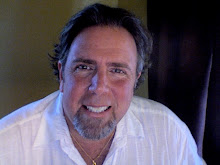I have a box and it is blue. By description you can imagine exactly what you need to understand that what I have, although key details about size and shape are left blank and the shade of blue is not fully described. But you get the idea that there is a container and the color is one of the primary ones evoked by light having a spectrum dominated by energy with a wavelength of roughly 440–490 nm.

Suppose I have a target date fund and it suggests I will retire in 20-years. Much like the blue box, most of what you need to know about this mutual fund is essentially portrayed in the name. Unlike other mutual funds, whose name seeks to tell you how the fund manager(s) will invest your hard-earned cash in a confusing jumble of confusing terms, target date funds convey a simple message of here and then. Here is the fund you want to get you to a then you need.
Unlike the blue box, there is far more at stake and because of that, a simple title for the investment is easy to understand but at the same time, so deeply layered and nuanced, that it makes the real investors wary and new investors complacent. Recently, Scott Holsople, president and CEO of Smart 401(k) wished that something as simple as a name could do it all for everyone. he wrote: "At Smart401k, we spend much of our time thinking about how to explain things in a manner that’s relatable to the average participant (i.e., someone who doesn’t live and breathe investing and its terminology)."
Suppose I have a target date fund and it suggests I will retire in 20-years. Much like the blue box, most of what you need to know about this mutual fund is essentially portrayed in the name. Unlike other mutual funds, whose name seeks to tell you how the fund manager(s) will invest your hard-earned cash in a confusing jumble of confusing terms, target date funds convey a simple message of here and then. Here is the fund you want to get you to a then you need.
Unlike the blue box, there is far more at stake and because of that, a simple title for the investment is easy to understand but at the same time, so deeply layered and nuanced, that it makes the real investors wary and new investors complacent. Recently, Scott Holsople, president and CEO of Smart 401(k) wished that something as simple as a name could do it all for everyone. he wrote: "At Smart401k, we spend much of our time thinking about how to explain things in a manner that’s relatable to the average participant (i.e., someone who doesn’t live and breathe investing and its terminology)."
Don't be jealous Scott. I have yet to find a single redeeming quality in TDFs. Cobbled together and containing questionable funds, they are hoisted on the 401(k) public as the be-all-to-end-all investment, making not only the plan sponsor feel a fiduciarially warm and fuzzy but giving the plan participant the impression that they need do nothing more.
Three things wrong with target date funds that folks choose to ignore.
1. The target is often wrong. If you are young, just starting out and auto-enrolled (which is how these things became popular and abundant in the first place), the target date you choose has little to do with your actual retirement date. It still hinges on the seemingly outdated 65 years old-and-done thinking. Which leads me to...
2. Everybody's target is different. If you are a blue-collar worker for example, the target might be accurate; but not so if you can work beyond. So the glide path, a nice word for "we don't know what we are doing and it has never been done before so use this imagery to explain it how we're going to get you from point A to point B", doesn't apply. Which leads me to...
3. What these fund managers do, none of whom will stay with the fund until it reaches retirement, none of whom invest in the fund and none of whom can explain exactly where the fund is relative to the benchmark (that doesn't really exist) is charge more than a similar portfolio of index funds or even a balanced fund and do so without a track record. Give us your underinvested, your newbies and your (by-choice) dumb investors and we will give them the way and the light, they seem to suggest. Suppose twenty years done the road you find yourself with far less than you assume. What then?
Only a few people have the nerve to speak out against these investment because they seem okay on the surface, they do get folks involved and the risks seem low. But they are going to disappoint more people than they help and I'd be willing to wager that in the next 10-years, folks will sour on the notion and realize that investing in the markets needs to be as simple and as low cost as possible and while TDFs seem simple, they are really just dumbed down versions of what could be something far more engaging. TDFs are an excuse for not educating yourself about where your money is going. Which in and of itself is a bit of a shocker.

No comments:
Post a Comment